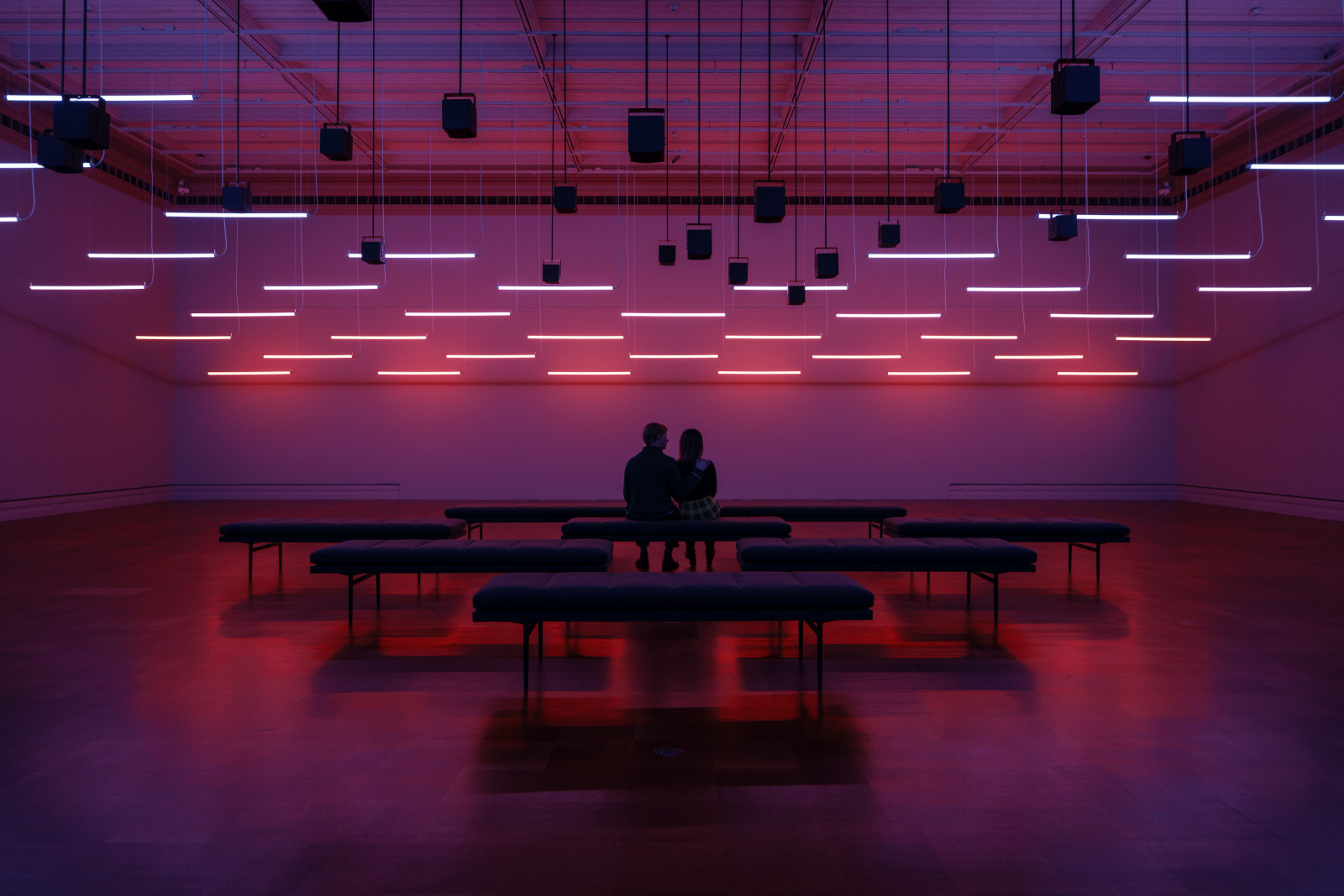Strigilated Sarcophagus with Lions Attacking Prey
Strigilated Sarcophagus with Lions Attacking Prey
Place of OriginRome (reportedly from Garden of Venus at Tivoli)
Date260-270 CE
DimensionsH (front): 24 13/16 in. (63.1 cm); H (back): 23 in. (58.4 cm); L: 81 1/16 in. (205.6 cm); Depth: 29 1/2 in. (74.9 cm)
MediumProconnesian marble, as confirmed by isotopic analysis.
ClassificationSculpture
Credit LinePurchased with funds from the Florence Scott Libbey Bequest in Memory of her Father, Maurice A. Scott
Object number
1987.223
On View
Toledo Museum of Art (2445 Monroe Street), Gallery, 02, Classic
DescriptionThis full-sized marble sarcophagus, of the lenos (bathtub) type, is carved from pale gray Proconnesian marble streaked with blue-gray veins. The front displays a strigilated pattern of opposing S-shaped flutes converging on a lozenge-shaped panel containing a pointed amphora. Each rounded end bears a lion in high relief, wearing a halter and subduing its prey—an antelope on the left, a boar on the right. The back is left rough for placement against a wall. Two iron-clamp holes near the rim once secured a lid for family burials.
Label TextThis monumental coffin, or sarcophagus, belongs to a type known as a lenos, distinguished by its rounded, tub-like ends. It is carved from distinctive pale grey Proconnesian marble, quarried on an island near Istanbul and shipped as a rough blank to Rome for carving. The front displays a wave-like strigil pattern surrounding a central pointed amphora, a common symbol of Dionysian pleasure or funerary libation. The ends feature fierce lions, identifiable by their halters as captive animals, attacking a boar and an antelope.
The sarcophagus began its journey in Rome, reportedly discovered in the Garden of Venus at Tivoli, and was acquired in 1803 by the Irish nobleman Valentine Brown Lawless, Lord Cloncurry (1773–1853). It was transported back to his country estate, Lyons House in Ireland, where it rested indoors as a central piece of his neoclassical collection until 1962. After the estate was sold, an heir removed the piece to England and placed it in a garden in Yorkshire. There, this 3rd-century Roman tomb was repurposed into a fountain basin, with a waterspout directing flow into its vessel. The mossy green patina and lime accretions that coated the lions’ muzzles were residues of its unusual 20th-century life as an outdoor ornament.
Published ReferencesBrewer, James Norris, The Beauties of Ireland: Being Original Delineations, Topographical, Historical, and Biographical, of Each County, London, Sherwood, Jones, & Co., 1825, pp. 76–77.Neale, John Preston, Views of the Seats of Noblemen and Gentlemen in England, Wales, Scotland, and Ireland. Second Series, Vol. 2, London, Sherwood, Jones & Co. (letterpress by Thomas Moule), 1825, under Lyons.
Burke, Bernard, A Visitation of the Seats and Arms of Nobelmen and Gentlemen of Great Britain and Ireland, 2nd series, London, Hurst and Blackett, 1855, p. 81 ff.
Eiffe, June, "Lyons, Co. Kildare," Bulletin of the Irish Georgian Society, XXVII, 1984, pp. 1-37, espeically p. 16.
"Calendar," Burlington, vol. 131, no. 1031, Feb. 1989, p. 184.
"Museum acquisitions," Minerva, vol. 1, no. 2, Feb. 1990, p. 41, repr.
Stroszeck, Jutta, Löwen‑Sarkophage: Sarkophage mit Löwenköpfen, schreitenden Löwen und Löwen‑Kampfgruppen (Die antiken Sarkophagreliefs, VI 1), Berlin, Gebr. Mann, 1998, p. 156, no. 367, pls. 36.1–2, 37.1, 118.6.
Knudsen, Sandra E., Craine, Clifford, and Tykot, Robert H., “Analysis of Classical Marble Sculptures in the Toledo Museum of Art,” in Herrmann, John J. Jr., Herz, Norman, and Newman, Richard, eds., ASMOSIA 5: Interdisciplinary Studies on Ancient Stone, (London: Archetype Publications, 2002), p. 232, 237, 239, no. 8, fig. 9.
Oakley, John H., “Roman Sarcophagi in the Toledo Museum of Art,” in Approaching the Ancient Artifact: Representation, Narrative, and Function, edited by Amalia Avramidou and Denise Demetriou, Berlin and Boston, De Gruyter, 2014, pp. 197-201, figs.1-3.
Comparative ReferencesSee also Rodenwaldt, G., "Romische Lowen," Critica d'Arte, l, 1935-1936, p. 225 ff.cf. Berg, P., Man Came This Way, Objects from The Phil Berg Collection, Los Angeles, Los Angeles County Museum of Art, (exh. cat.), March 9 - May 30, 1971, cat. no. 90.
cf. Andreae, Bernard, Aufstieg und Niedergang der Romisch Welt, Berlin and New York, 1972.
cf. Chiarlo, Carlo, "Sui significato dei sarcofagi a ... decorati con leoni," Annali della Scuola Normale Superiore di Pisa, serie III, vol. IV, 4, Pisa, 1974, pp. 1307-1345.
cf. Robert, C. and C. Rodenwaldt, Antiken Sarkophagreliefs, Berlin, 1980.
cf. Walker, Susan, "The Marble Quarries fo Proconnesos: Isotopic Evidence for the Age of the Quarries and for Lenos-Sarcophagi Carved at Rome," Studi Miscellanei 26 Marmi Antichi, Seminario di archeologia e storia dell-arte greca e romana dell' universita di Roma La Sapienza, Rome, 1985, pp. 57-65, tav. 1-3.
cf. Walker, Susan, Memorials to the Roman Dead, London, 1985, espeically pp. 29-32.
Late 2nd or 1st century BCE
Hadrianic (about 130 CE)
150-200 CE
about 130 CE
280-290 CE (with 15th century recarving)
Warring States Period (about 475–221 BCE)
Yamashiro (kyo) School
mid-18th century, Edo Period (1600-1868)
Jean Duvet
about 1545-1556

Membership
Become a TMA member today
Support TMA
Help support the TMA mission


















